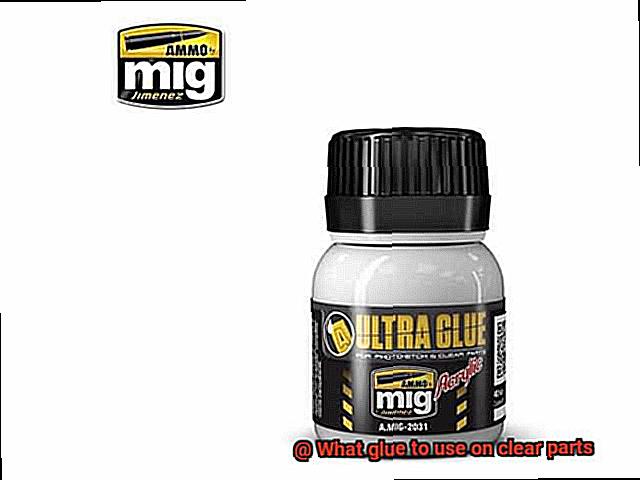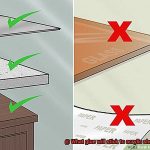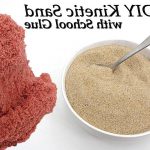Ever found yourself faced with a shattered glass ornament or a cracked acrylic display, desperately seeking a way to fix it without leaving a trace? We’ve all been there, pondering the best adhesive to mend these delicate pieces. Well, worry no more. Today, we delve into the captivating realm of gluing transparent materials and unveil the ultimate glue for clear parts.
Picture this: you’ve poured your heart and soul into creating an exquisite stained glass window, only to discover a tiny fracture. Or perhaps you stumble upon a damaged corner on your beloved acrylic photo frame. No matter the scenario, restoring these see-through treasures demands careful consideration of the adhesive you choose.
Throughout this article, we navigate the intricacies of working with transparent materials and offer expert advice on selecting the right glue for any repair job. Our extensive research, experimentation, and consultations with professionals have culminated in a comprehensive guide to various glue types and their suitability for transparent fixes.
Prepare to uncover the secrets behind glues like epoxy, cyanoacrylate (commonly known as super glue), and UV-curing adhesives. Explore their distinctive features, advantages, and disadvantages while learning precisely when each one should be employed for flawless and long-lasting repairs. We’ll also delve into special considerations such as clarity, flexibility, and adhesion strength to ensure your fixes stand the test of time.
So grab yourself a steaming cup of coffee, don your problem-solving hat, and get ready to demystify the world of adhesives. Regain your confidence in tackling those transparent repairs as we embark on a quest to discover the perfect glue for your clear parts.
What is Cyanoacrylate Adhesive and Why is it Suitable for Clear Parts?
Contents
- 1 What is Cyanoacrylate Adhesive and Why is it Suitable for Clear Parts?
- 2 Epoxy Resin: A Versatile Adhesive for Bonding Clear Parts
- 3 Solvent-Based Glues: An Effective Choice for Certain Plastics
- 4 UV-Curing Adhesives: Ideal for Precision Projects
- 5 Factors to Consider When Choosing a Glue for Clear Parts
- 6 Proper Surface Preparation is Essential for a Strong Bond
- 7 Different Types of Glue Available on the Market
- 8 Tips and Tricks to Achieve the Best Results with Clear Part Glueing
When it comes to creating flawless connections with clear parts, the choice of adhesive is paramount. The adhesive must possess unique qualities to ensure a strong bond that withstands the test of time. In this captivating article, we will delve into the fascinating world of cyanoacrylate adhesive, also known as super glue, and uncover why it reigns supreme for bonding clear parts.
Transparency:
In a league of its own, cyanoacrylate adhesive boasts unparalleled transparency. Unlike its counterparts that leave behind unsightly residue or discoloration, this adhesive dries crystal clear, effortlessly blending with the surface it adheres to. Its magic lies in its ability to seamlessly bond clear plastics and glass without compromising their visual clarity, making it an unrivaled choice for transparent projects.
Strong Bonding Strength:
Cyanoacrylate adhesive is renowned for its unyielding bond, ensuring enduring connections between surfaces. For clear parts that may endure stresses or vibrations, this adhesive offers a robust solution. Its remarkable strength prevents any possibility of detachment or failure of the bonded components, guaranteeing long-lasting results that stand up to rigorous demands.
Fast Curing Time:
Time waits for no one, especially when working with clear parts. Fortunately, cyanoacrylate adhesive possesses a lightning-fast curing time. In a matter of seconds to minutes, depending on the specific formulation and conditions, it sets with unparalleled efficiency. This rapid curing capability facilitates swift assembly, eliminating the need for clamping or prolonged drying times. As a result, accidental movement or misalignment risks are minimized, ensuring precision in every bond.
Resistance to Yellowing:
As time marches on, some adhesives succumb to the effects of light and heat, turning yellow and tarnishing the appearance of bonded areas. However, cyanoacrylate adhesive defies these challenges, maintaining its transparency even under prolonged exposure to UV light or high temperatures. The result? Clear parts retain their pristine clarity and aesthetics, unaffected by the passage of time.
Epoxy Resin: A Versatile Adhesive for Bonding Clear Parts
In our last discussion, we explored the wonders of cyanoacrylate adhesive and its ability to flawlessly bond clear parts. Today, let’s dive into the world of epoxy resin and discover why it’s the go-to choice for bonding those crystal-clear surfaces.
Epoxy resin, a two-part adhesive composed of a resin and a hardener, is the secret weapon in the battle against visible seams. When these two components unite, a magical chemical reaction takes place, creating a bond so strong you’ll question its origins.
What sets epoxy resin apart from other adhesives is its transparency. While some adhesives leave behind an unsightly yellowish tint, epoxy resin dries crystal clear. This makes it the perfect companion for bonding clear parts like glass, plastic, or acrylic. Say goodbye to visible seams and hello to seamless clarity.
But epoxy resin isn’t just a pretty face – it’s also incredibly resilient. It forms a bond that can withstand moisture, heat, and even chemical exposure. So whether you’re constructing an exquisite aquarium or repairing a cracked car headlight, rest assured that epoxy resin will keep things securely held together, even in the harshest conditions.
Now, achieving a flawless bond with epoxy resin requires some finesse. Before applying the adhesive, ensure that the surfaces are immaculately clean. A gentle wipe-down with mild detergent or alcohol on a clean cloth will do the trick. And don’t forget to give the surfaces a slight roughening with fine-grit sandpaper for enhanced adhesion.
Now comes the exciting part – mixing and applying the epoxy resin. Follow the manufacturer’s instructions and blend equal parts of the resin and hardener until they harmonize perfectly. Armed with your trusty brush or spatula, spread the resin evenly over one of the surfaces, leaving no crevice untouched.
Next, press the two surfaces together firmly and maintain pressure until the epoxy resin sets. The curing time will depend on the specific product you’re using, so exercise patience and consult the instructions for guidance. Once the resin has hardened, any excess adhesive can be banished with a razor blade or some gentle sanding.
Solvent-Based Glues: An Effective Choice for Certain Plastics
Today, we embark on an exciting exploration of the world of glue, focusing on the unparalleled effectiveness of solvent-based glues when it comes to bonding certain plastics. So, grab your safety goggles and brace yourselves for a fascinating journey.
Solvent-based glues, also known as plastic cements or model glues, reign supreme as the ultimate choice for bonding clear parts made of specific plastics. Their secret weapon? A mighty solvent that works its magic by delicately softening and melting the plastic surfaces, resulting in an astonishingly robust and enduring bond.
One of the most remarkable advantages of using solvent-based glues on clear parts lies in their ability to create a bond that is both crystal-clear and transparent. Imagine this: you’ve invested countless hours into crafting a jaw-dropping masterpiece using materials like acrylic or polystyrene, and the last thing you want is a visible seam tarnishing your hard work. Fret not. These glues possess a unique prowess, seamlessly fusing the plastic surfaces together with an almost invisible bond line. Prepare to be awestruck by the sheer clarity.
But hold on tight, folks. Solvent-based glues don’t stop there. They truly excel at bonding smooth and non-porous surfaces – perfect for those sleek clear plastics like acrylic or polystyrene. These materials often boast surfaces so smooth they pose quite a challenge for other types of adhesives. Luckily, the solvent in these glues leaps into action, delicately softening the plastic and allowing it to flow into even the tiniest grooves or imperfections on the surface. The result? A bond so sturdy you’ll question whether it was crafted by sorcery itself.
Now, before you dive headfirst into the world of solvent-based glues, heed this important reminder: not all clear plastics can be bonded using these extraordinary products. They are specifically formulated for use with particular types of plastics such as acrylic, polystyrene, or ABS (acrylonitrile butadiene styrene). So, always exercise caution and ensure the compatibility of the glue with your chosen plastic material before commencing your adhesive adventure.
UV-Curing Adhesives: Ideal for Precision Projects
In this world, every choice matters, and when it comes to bonding clear parts, there is one adhesive that reigns supreme – UV-curing adhesives. These remarkable substances possess an array of unique properties and advantages that make them the unparalleled choice for your precision endeavors. So, fasten your goggles tightly and prepare to embark on an exhilarating journey through the enchanting realm of UV-curing adhesives.
At the core of their allure, UV-curing adhesives are one-part wonders that cure with lightning speed when exposed to ultraviolet light. In the realm of precision projects, where time is of the essence, this rapid curing process is a true game-changer. No longer must you endure interminable waits for adhesives to dry – with UV adhesives, efficiency and promptness become your steadfast allies.
But how does this spellbinding curing process work? Picture a mesmerizing magic show unfolding before your very eyes. As you illuminate the adhesive with a UV light source, a special ingredient known as a photoinitiator springs into action. This wondrous catalyst sets off a cascading reaction, propelling the adhesive to polymerize and forge an astonishingly robust bond. It is akin to witnessing an extraordinary masterpiece materialize before you in an enchanting display of alchemy.
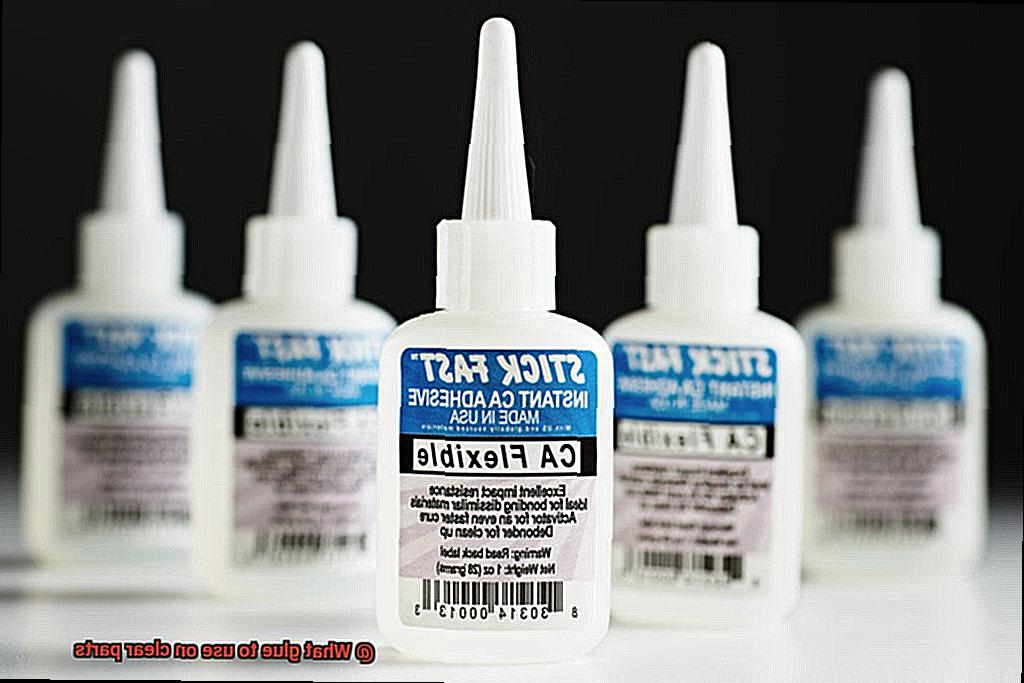
Now, let us delve into one of the most bewitching qualities possessed by UV-curing adhesives – their ability to bond clear materials without leaving behind any visible residue or discoloration. In the domain of precision projects, where aesthetics reign supreme, any discernible marks left by adhesives can be an abhorrent blight upon your creation. But fear not. With UV adhesives as your accomplice, your masterpiece shall remain unblemished, its flawless appearance preserved with an invisible touch.
And speaking of invisibility, UV-curing adhesives offer unparalleled clarity and transparency. Picture the nightmare of bonding clear parts only to have the adhesive obfuscate the exquisite visibility of your creation – a tragedy indeed. But despair not, dear friend, for UV adhesives shall emerge as your saviors. With their extraordinary properties, they ensure that your bond remains resplendently clear, allowing the ethereal beauty of your clear parts to radiate unhindered and unblemished.
Factors to Consider When Choosing a Glue for Clear Parts
Today, we embark on a journey through the captivating world of choosing the perfect glue for clear parts. Whether you’re working on a mesmerizing stained glass project or creating an enchanting jewelry piece, the glue you choose can make all the difference. So, let’s uncover the factors to consider when selecting this magical adhesive.
- Transparency: Clear parts are meant to be seen through, so it’s crucial to choose a glue that dries clear without any residue or discoloration. Look for glues specifically designed for transparent materials to achieve that flawless finish.
- Bonding Strength: Clear parts often require a strong adhesive to keep them securely in place. Opt for a glue with excellent bonding strength to ensure your creations withstand the test of time while maintaining their integrity.
- Quick Drying Time: Delicate clear parts can easily be damaged during the drying process. Select a glue with a quick drying time to minimize the risk of accidental movement or smudging. This not only protects your creations but also boosts efficiency by allowing you to complete projects in record time.
- Flexibility: Clear parts may experience slight movements or vibrations. Choose a glue that offers flexibility to withstand these stresses without cracking or breaking, providing that extra durability.
- Resistance to Yellowing: Some glues tend to yellow over time when exposed to sunlight or environmental factors. To prevent this unfortunate fate, select a glue that is resistant to yellowing. This is especially important for projects involving long-term usage or outdoor applications.
- Compatibility: Different types of clear materials, such as acrylic, polycarbonate, or glass, may have different adhesive requirements. Before selecting a glue, ensure it is compatible with the specific clear material you’re working on. This guarantees the best results and a bond that’s truly magical.
- Application Method: Consider the ease of application, precision, and control offered by different types of glues. Some come in liquid form, while others may be in gel or adhesive tape form. Choose a glue that suits your project requirements and personal preferences.

Proper Surface Preparation is Essential for a Strong Bond
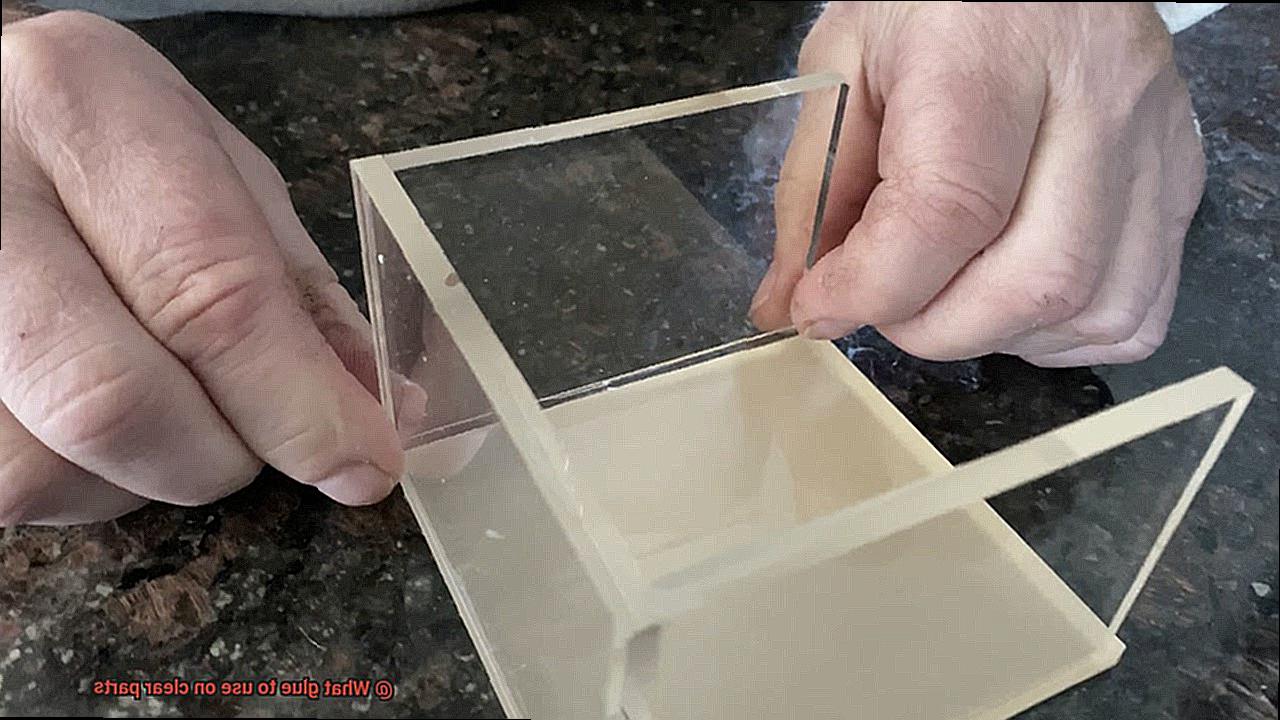
In this enchanting journey, we will unravel the secrets of proper surface preparation for clear parts and glue. Imagine a world where your masterpieces stand tall, defying gravity’s pull. Fear not, for I shall be your guide, leading you through the labyrinth of surface preparation.
Together, we shall unlock the key to achieving flawless and everlasting unions between clear parts and glue. Let us embark on this captivating adventure now.
Step 1: The Dance of Cleanliness
In this waltz of adhesion, cleanliness takes center stage. Just as a single grain of sand can disrupt a perfect mechanism, so can dirt, grime, and oil hinder the bond between clear parts and glue. Begin by cleansing the clear parts meticulously. Employ soapy water or a mild detergent to cleanse away impurities, followed by rinsing with pristine water and thorough drying.
Step 2: Farewell to Coatings and Films
Now that our stage is set with clean surfaces, let us bid adieu to any sly coatings or films that dare to challenge our bond. These culprits obstruct the glue’s path to perfection.
Special solvents designed for removing coatings from clear materials shall come to our aid. But tread cautiously, following the manufacturer’s instructions diligently to avoid harming our precious creations.
Step 3: The Graceful Sandpaper Symphony
Ah, sandpaper. The artisan’s symphony that transforms smooth surfaces into gripping masterpieces. Clear parts possess a formidable smoothness that challenges glue’s tenacity. Embrace the art of sanding gracefully, using fine-grit sandpaper to create a tapestry of roughness upon these pristine surfaces. This intricate dance enhances contact points for the glue, yielding unparalleled adhesion. But remember, after this symphony, cleanse once more, banishing any lingering sanding residue.
Different Types of Glue Available on the Market
When it comes to working with clear parts like plastic or glass, the glue you choose can make all the difference in the strength and durability of your project.
With a wide variety of glues available on the market, each offering its own unique properties and advantages, it’s important to understand the different types of glue that can be used for bonding clear parts.
In this article, we will explore five distinct categories of glue and delve into their magical abilities when it comes to bonding clear parts.
Epoxy Resin: Unleashing Super Strength
Imagine a glue that possesses the power to create an unbreakable bond between clear parts. Enter epoxy resin, the superhero of adhesives. This versatile adhesive is capable of bonding various materials, including clear plastics.
By combining two components and allowing for a longer curing time, epoxy resin forms an incomparably strong bond. Once dry, it showcases exceptional clarity and can even be sanded and polished. For projects that demand a bond as resilient as steel, epoxy resin is the ultimate choice.
Cyanoacrylate Adhesive: Lightning-Fast Bonding
If you seek a glue that dries in an instant, look no further than cyanoacrylate adhesive, often referred to as super glue. This enchanting adhesive works its magic by swiftly forming a robust and transparent bond on clear plastic parts.
Its rapid drying time makes it ideal for delicate projects that require quick completion. However, it’s worth noting that not all cyanoacrylate adhesives are suitable for clear parts, so be sure to select one specifically designed for transparent materials.
Solvent-Based Cement: Whispering Secrets to Plastic
Clear parts made of acrylic or polycarbonate often call for a special kind of adhesive. That’s where solvent-based cement steps in. This glue works its magic by gently softening the surface of the plastic, allowing for a seamless fusion when the solvent evaporates.
It acts as a whisperer, bonding clear parts together flawlessly. However, it’s crucial to choose a solvent-based glue that is compatible with the specific type of plastic you are working with to ensure a successful bond.
UV-Curing Glue: Activated by the Light’s Embrace
Imagine a glue that only comes to life when exposed to ultraviolet (UV) light. Behold UV-curing glue, the adhesive that harnesses the power of light to work its wonders. This magical glue finds its place in industries such as electronics and optics, where precision and clarity are paramount. With different viscosities available, you can select the perfect UV-curing glue to bring your clear parts project to life.
Tips and Tricks to Achieve the Best Results with Clear Part Glueing
When it comes to glueing clear parts, whether it’s plastic or glass, achieving flawless results requires careful attention to detail and the use of proper techniques. In this article, we will delve into the essential tips and tricks that will help you achieve the best results when working with clear parts.
Immaculate Cleanliness:
Before beginning the glueing process, ensure that the surfaces of the clear parts are pristine and free from any dust, grease, or fingerprints. To achieve this, meticulously clean the surfaces using a mild soap or detergent and water. This step is crucial as any contaminants can interfere with the adhesive’s ability to form a strong bond. Allow the surfaces to dry completely before proceeding.
The Right Adhesive:
Not all glues are created equal when it comes to bonding clear parts. Look for specialized adhesives that are specifically formulated for transparent materials. These glues, often labeled as “clear part adhesive” or “plastic bond,” are designed to provide a transparent bond without leaving any visible residue or compromising the clarity of the clear part. Carefully read the product labels to ensure compatibility with the type of material you are working with.
Sparingly Apply:
Excess glue can be a recipe for disaster when working with clear parts. It can seep out from the edges, creating unsightly blobs or smudges that mar the appearance of your project. To avoid this, apply a thin and even layer of adhesive along the edges or contact points of the clear part. This not only ensures a strong bond but also prevents excess glue from spoiling your hard work.
Precision Alignment:
Accurate alignment is crucial when joining two clear parts together. Take the time to align the parts correctly before applying the adhesive. Once the glue has set, repositioning or adjusting the parts becomes difficult without compromising the bond.
To ensure precise alignment, use masking tape or clamps to hold the parts firmly in place while the glue dries. This will result in a seamless and professional-looking final product.
Patience is a Virtue:
Rushing the glueing process can lead to subpar results. It is essential to allow sufficient time for the adhesive to fully cure and form a strong bond before handling or applying stress to the joint.
The curing time varies depending on the type of adhesive used, so it is crucial to follow the manufacturer’s instructions. Patience during this stage ensures that your clear parts are securely bonded and ready for use.
FaWgLJVPKAs” >

